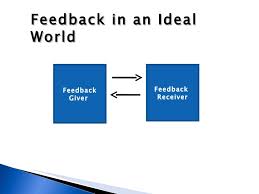
Consultation and feedback processes should not be underestimated
Christopher Lytle MA CDS
 Consultation and feedback processes should not be underestimated. Doing away with the old systems of decision making provides for a more thorough engagement with those groups that would represent gaps in policy and operations. In terms of forward movement it is great to see that mechanisms which allow for community involvement are being recognized as vital. The Ontario human rights commission creates policy for new and developing trends which are designed to tweak the ear of organizations, allowing them to make an interpretation that will allow for a broadening concept of inclusion. The reason why the Ontario Human Rights Commission (OHRC) is able to do this is because they have a preternatural ability to collect intelligence on rights that can work to an organizations favour.
Consultation and feedback processes should not be underestimated. Doing away with the old systems of decision making provides for a more thorough engagement with those groups that would represent gaps in policy and operations. In terms of forward movement it is great to see that mechanisms which allow for community involvement are being recognized as vital. The Ontario human rights commission creates policy for new and developing trends which are designed to tweak the ear of organizations, allowing them to make an interpretation that will allow for a broadening concept of inclusion. The reason why the Ontario Human Rights Commission (OHRC) is able to do this is because they have a preternatural ability to collect intelligence on rights that can work to an organizations favour.
Consultation and feedback processes are prepackaged into legislation so that an organization can maintain its own evidence about what policies should look like, and when maintained correctly, they become an invaluable tool that can assist in developing better and more resounding approaches to inclusion. From an accessibility standpoint consultation and feedback processes are important because they provide for implementation of accommodations and analysis of accessibility. From a standpoint of human rights, they are also important because the general information held within requests for accommodation can assist an organization in planning barrier free access by employing universal design.
If an organization does not have a developed process for receiving and dealing with feedback, it will have trouble creating awareness around gaps that may be present in policies pertaining to employment, diversity, harassment, accessibility etc. If an organization does not have a good system that allows it to conduct consultations it will not be able to properly engage outlying communities let alone its own employees or volunteers.
Incorporating these two facets of accountability successfully manoeuvres organizations out of the outdated realm when decisions that affected a group were issued by a minority of people. Within reason, consultation and feedback are two key ingredients that should be utilized when developing a rights based approach to the operations of an organization that wishes to become even more accountable to its constituents.
What we have seen in Ontario is the renegotiation of what decision making looks like and the possibilities of pushing this even further allow us to re-imagine what the potential operations of an organization might look like ten years down the road.
Table of Contents
Compliance Made Easy®

